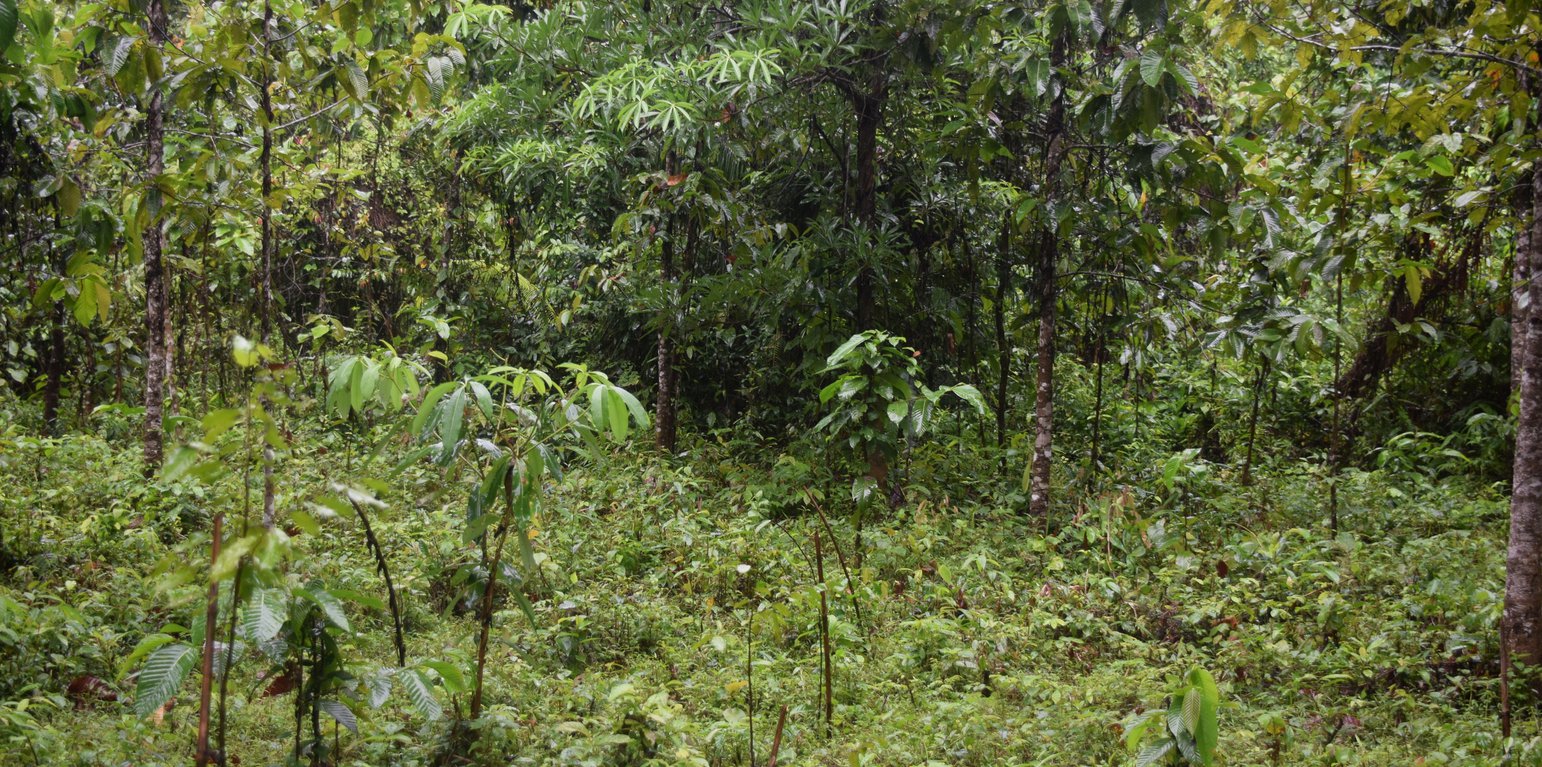



Medhakachapia National Park (MKNP) is nationally known for protecting the most extensive stands of mature critically endangered Garjan (Dipterocarpus turbinatus) trees in Bangladesh. Other native trees present in MKNP include Telsur Hopea odorata, Boilam Anisoptera scaphula, Gamar Gmelina arborea and Chapalish Artocarpus chaplasha. MKNP is tropical semi-evergreen forest in the low hills of the Fulchari Forest Range and covers 396 hectares. The park is located in Chakaria Upazila, not far from Cox’s Bazar in the southeast part of the country. Originally, the entire park area was densely covered with Garjan forest, but now there are about 9000 mature Garjan trees as many parts have been encroached upon with agriculture. MKNP is bordered by 13 villages where most of the people depend directly or indirectly upon the forest. Encroachment by settlements and agriculture has been associated with illegal tree cutting, hunting, and collection of fuel wood, bamboo and cane and other forest products. These activities are encouraged by sawmills in the vicinity and unemployment. Due to reduced canopy coverage, the forest soils have been exposed degraded. In order to restore forest health, the Bangladesh Forest Department introduced Assisted Natural Regeneration (ANR) practice. The access for public recreation and education and research is allowed inside national park. However, the collection of fuel woods and non-timber forest product from national park area by the local communities is a common scenario here.
ANR aims to accelerate, rather than replace, natural succession processes by removing or reducing barriers to natural forest regeneration such as competition with weedy species and recurring disturbances (e.g., fuel wood collection, grazing, fire and wood harvesting). Compared to conventional reforestation methods, which involve planting tree seedlings, ANR offers the significant advantage avoiding costs associated with propagating, raising, and planting seedlings. ANR is most effectively utilized at the landscape level in restoring the forest protective functions, such as soil protection, and is most suitable for restoring areas where some level of natural succession is already in progress. ANR offers distinct advantages over other forest restoration methods but also has some limitations. ANR is much cheaper to implement and can be applied over larger areas than other restoration planting approaches, but may be less effective in enhancing floristic diversity at the initial stages. Some of ANR’s disadvantages can be overcome by enrichment planting with desirable species. ANR aims to accelerate, rather than replace natural succession process by removing or reducing barriers to natural forest regeneration.
Soil degradation of MKNP has been greatly reduced through practicing ANR and co-management. In MKNP co-management was established on 2009 engaging local communities. As a part of co-management activities, the Forest Department (FD) formed a Community Patrolling Group (CPG) with 35 members from the local community to protect the Garjan trees and look after the whole forest along with forester officers. Under the support from Climate-Resilient Ecosystems and Livelihoods (CREL) project of USAID, the CPG along with FD intensively patrol the forest in rotating groups to ensure that no harm is done to the mature trees and natural seedlings. As a result, sufficient tree regeneration is now taking place and their growth is accelerating. Even where weeds dominate, seedlings of pioneer tree species are often found. The minimum required number of preexisting seedlings to implement ANR depends on the acceptable length of time for the forest to be restored and site-specific conditions that influence the rate of forest recovery. As a general reference, a density range of 200–800 seedlings/ha (>15 cm in height; counting clumps in 1 m2 as one seedling) has been suggested for ANR reforestation, and it has been estimated that at least 700 seedlings/ha are needed during the early treatment period in order to achieve canopy closure within three years. Although the forest restored through ANR in MKNP will have lower commercial value in terms of timber, it will support greater biodiversity and more effectively provide for the subsistence needs of the local people compared to commercial plantations.
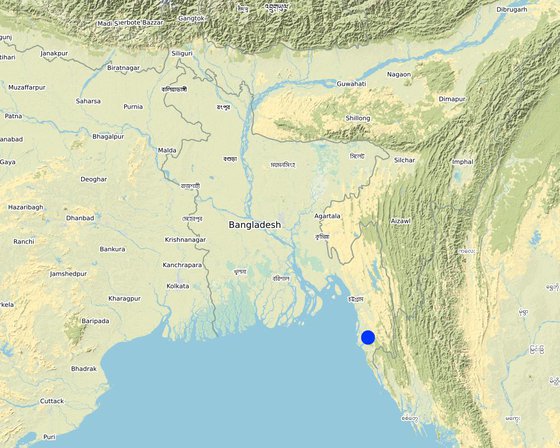
地点: Medakacchapia National Park under Cox's Bazar North Forest division, Chittagong division, 孟加拉国
分析的技术场所数量: 2-10个场所
技术传播: 均匀地分布在一个区域 (approx. 1-10 平方千米)
在永久保护区?: 是
实施日期: 2014
介绍类型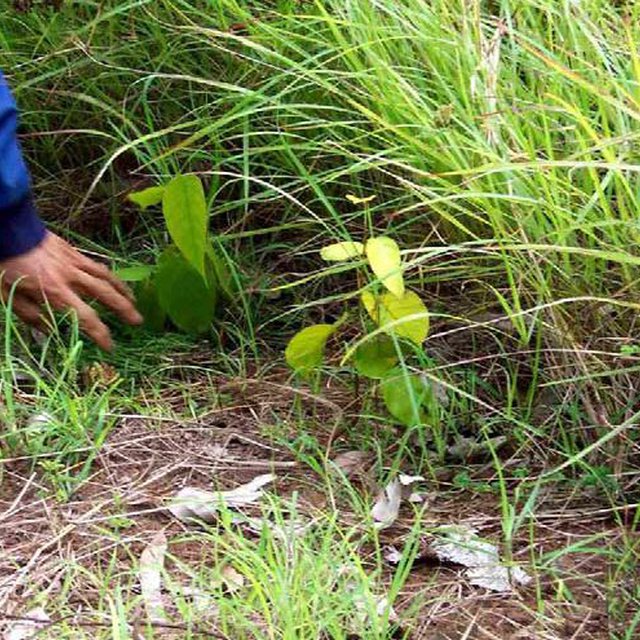
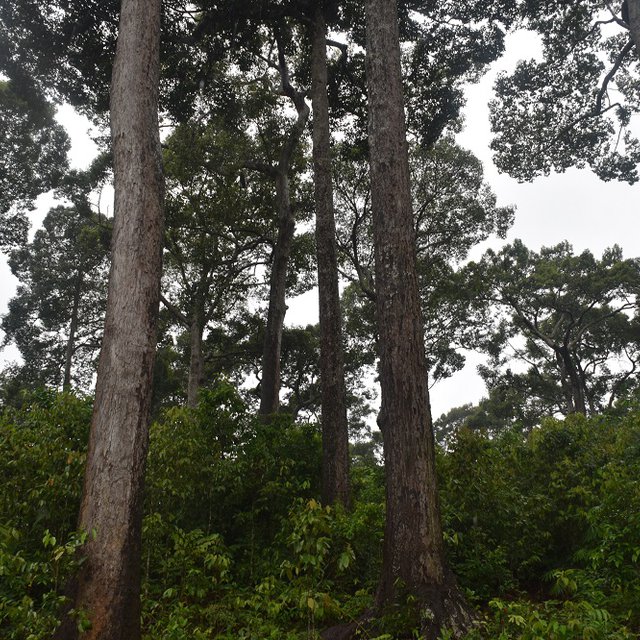





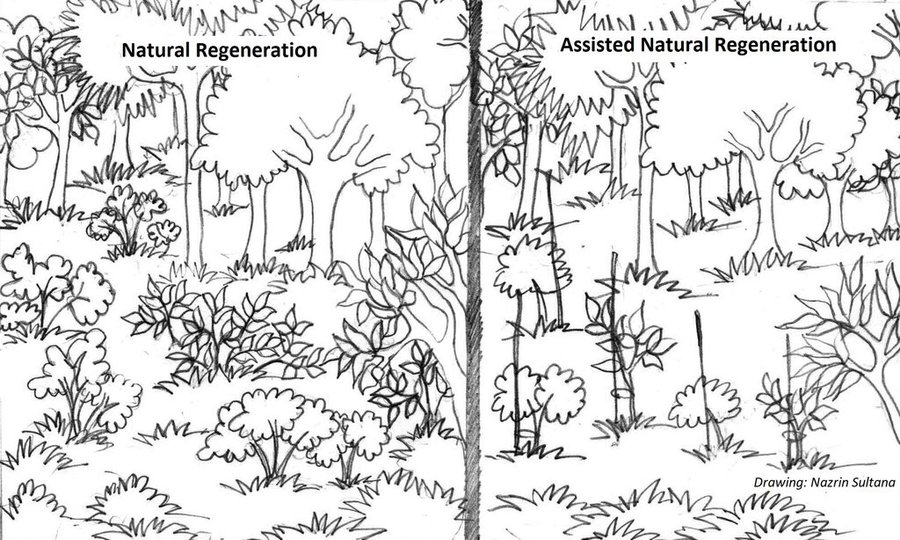
| 对投入进行具体说明 | 单位 | 数量 | 单位成本 (BDT) | 每项投入的总成本 (BDT) | 土地使用者承担的成本% |
| 劳动力 | |||||
| Survey for map preparation and marking of woody regeneration | person-days | 1.0 | 500.0 | 500.0 | |
| Tying up seedlings and young trees | person-days | 4.0 | 500.0 | 2000.0 | |
| Tending of woody regeneration | person-days | 10.0 | 500.0 | 5000.0 | |
| Application of fertilizers | person-days | 4.0 | 500.0 | 2000.0 | |
| 设备 | |||||
| Weeding equipment (manual weeding tool) | lump sum | 1.0 | 1000.0 | 1000.0 | |
| Bamboo sticks for tying up seedlings | pieces | 800.0 | 2.0 | 1600.0 | |
| Rope | lump sum | 1.0 | 1000.0 | 1000.0 | |
| 肥料和杀菌剂 | |||||
| Compost fertilizer | Kg | 625.0 | 4.0 | 2500.0 | |
| 施工材料 | |||||
| Rod, Cement, Sand, Khoa, etc for RCC signboard | Lump sum | 1.0 | 1000.0 | 1000.0 | |
| 技术建立所需总成本 | 16'600.0 | ||||
| 技术建立总成本,美元 | 197.62 | ||||
| 对投入进行具体说明 | 单位 | 数量 | 单位成本 (BDT) | 每项投入的总成本 (BDT) | 土地使用者承担的成本% |
| 劳动力 | |||||
| 1st year weeding | person-days | 15.0 | 500.0 | 7500.0 | |
| 2nd year weeding | person-days | 15.0 | 500.0 | 7500.0 | |
| 3rd year weeding | person-days | 10.0 | 500.0 | 5000.0 | |
| 4th year weeding and 5th year climber cutting | person-days | 15.0 | 500.0 | 7500.0 | 100.0 |
| 设备 | |||||
| Weeding equipment (manual weeding tools) | lump sum | 1.0 | 1000.0 | 1000.0 | |
| 技术维护所需总成本 | 28'500.0 | ||||
| 技术维护总成本,美元 | 339.29 | ||||
ANR support the growth of woody vegetation and regular monitoring of ANR also provide security to the mature trees of the stand
Through ANR the fellow and degraded forest land now bring under productive forest
ANR is a comparatively easy method than clear felling with artificial regeneration, mixed plantation or enrichment plantation to manage forest area
The local communities can collect NTFP from the ANR site. Due to the increase of vegetation and presence of wildlife in MKNP, the area also attract tourists. The CPG people also worked as tourist guide
aesthetic beauty of forest improved
eco-tourism increased
Poor people working in Community Patrolling Group (CPG) taking care of ANR with forest department. Social status of these poor people improved.
Due to increased canopy coverage evaporation decreased
Through ANR only native plant species promoted to grow here
Animal diversity increased as the habitat improved
habitat diversity increased with the canopy coverage and tree density improvement
Due to the presence of vegetation on slope the stream flow become stable